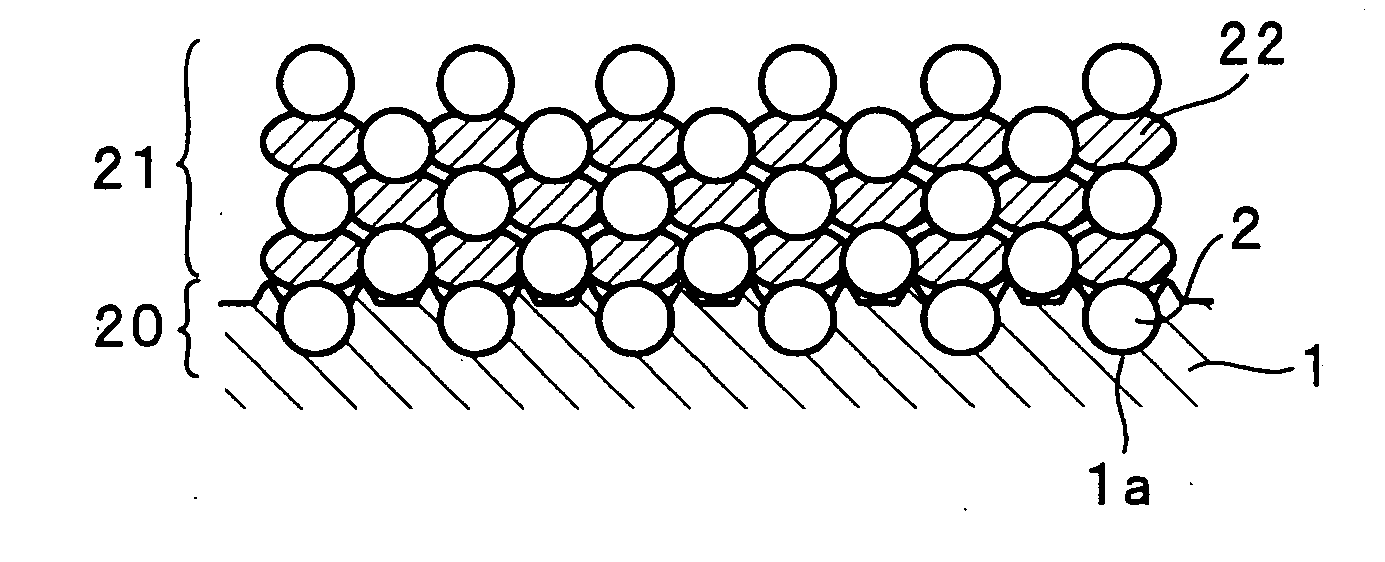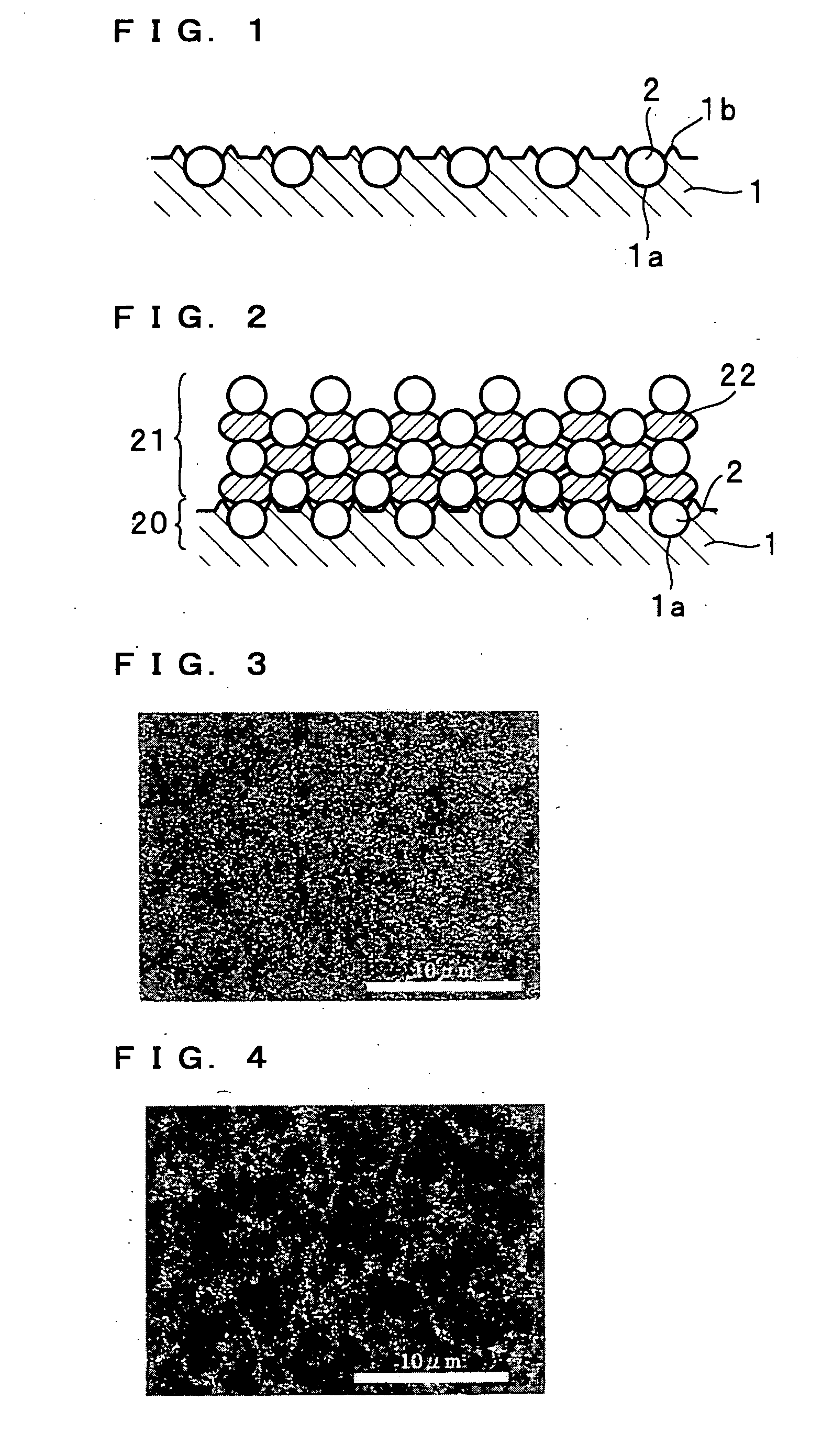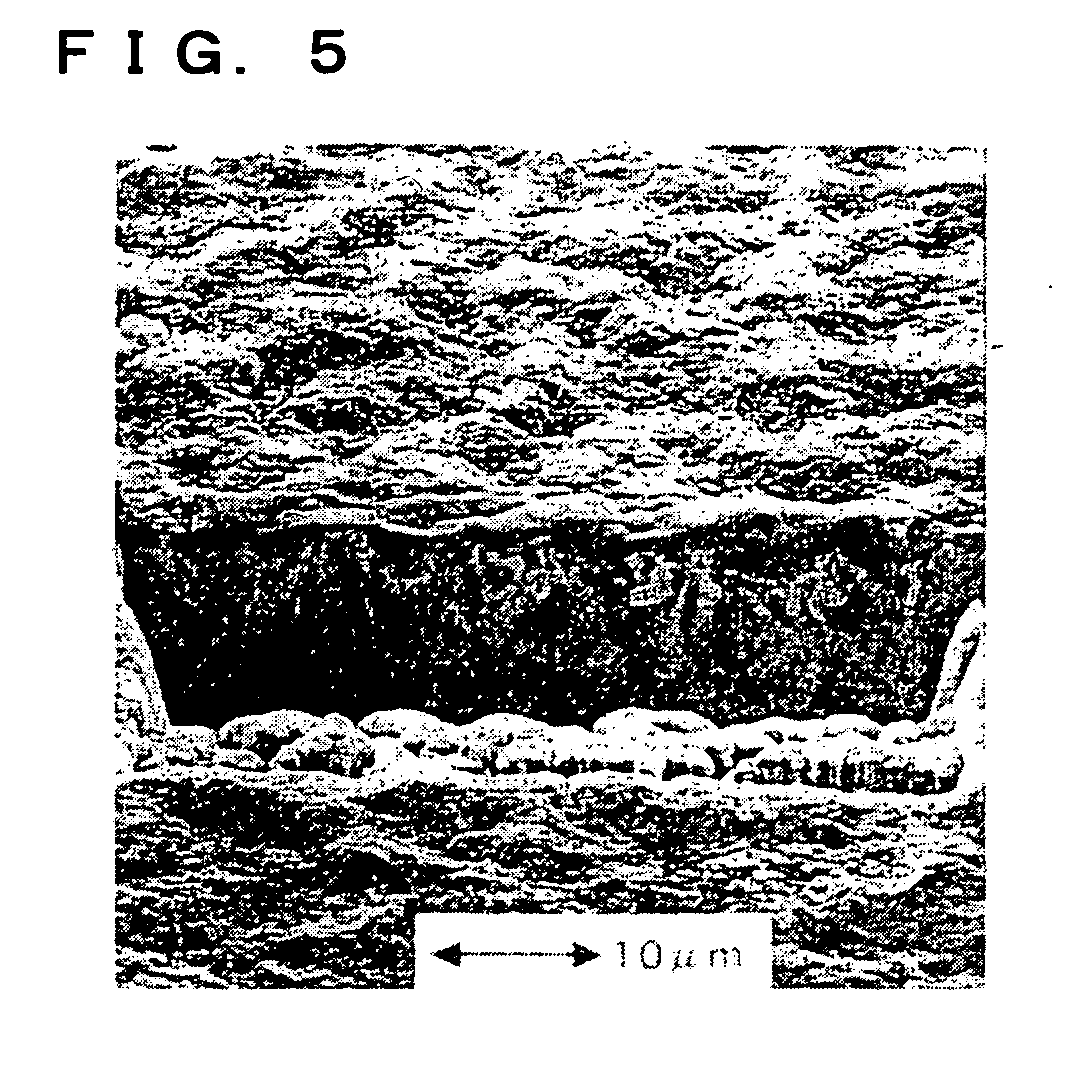Electrode for lithium secondary battery and lithium secondary battery
a lithium secondary battery and electrode technology, applied in the manufacture of electrodes, cell components, electrochemical generators, etc., can solve the problems of reduced current collectability, cycle characteristics of electrodes using silicon active materials, and reduced current collectability, etc., to achieve excellent charge/discharge cycle characteristics, high volume energy density, and high current collectability
- Summary
- Abstract
- Description
- Claims
- Application Information
AI Technical Summary
Benefits of technology
Problems solved by technology
Method used
Image
Examples
example 1
[Production of Electrode by Cold Spraying Method, Using Silicon as Active Material]
[0065] Using crystalline silicon particles (average particle size: 2.5 μm) as the active material particles, and an electrolytic copper foil (thickness: 35 μm, arithmetic average roughness Ra: 1.46 μm) as the current collector, the silicon particles were brought into collision with the glossy surface of the electrolytic copper foil which was the opposite side to the roughed surface of the foil by cold spraying method, to produce an electrode. Specifically, a device for cold spraying shown in FIG. 21 was used to produce the electrode. As shown in FIG. 21, the current collector 1 made of the electrolytic copper foil was wrapped around a support plate 7 made of a copper plate with a thickness of 2 mm, each end of which was then fixed with a clip 6. The current collector 1 was wrapped around the support plate 7 with the glossy surface of the electrolytic copper foil turned outside. The support plate 7 wa...
example 2
[Production of Electrode by Cold Spraying Method, Using Silicon as Active Material]
[0095] Silicon particles were allowed to adhere to the current collector surface by cold spraying method to produce an electrode in the same manner as in Example 1 except that the electrolytic copper foil was wrapped around the support plate with the roughened surface of the electrolytic copper foil on the front side in order to allow the silicon particles to adhere to the roughened surface side of the copper foil.
[0096] Also in the electrode obtained in the present example, the silicon particles were very firmly bonded to the current collector. FIGS. 9 and 10 are sectional views obtained by FIB-SIM observation of the cross section of the resultant electrode. It is found that, as apparent from FIGS. 9 and 10, the silicon particles adhere along the concavity and convexity of the current collector surface. In comparison between the concave portion and the convex portion on the current collector surfac...
example 3
[Production of Electrode by Cold Spraying Method, Using Mixture of Silicon Particles and Tin Particles]
[0150] In Examples 1 and 2 where only the silicon particles were used as the active material particles as above described, one layer of the silicon particles, namely a layer of the silicon particles with the thickness of only one silicon particle, is considered to be deposited on the copper foil. This is presumably because the silicon particles are difficult to bind by cold spraying method, and after substantial coating of the copper foil surface with the silicon particles, the silicon particle being brought into collision with the copper foil surface does not adhere to the top of the silicon particle and drops off. Therefore, adjustment of the sizes of the active material particles by utilizing deposition of the particles with only one-particle thickness enables control of the quantity of the active material particles to adhere to the current collector surface.
[0151] Further, as...
PUM
| Property | Measurement | Unit |
|---|---|---|
| Ra | aaaaa | aaaaa |
| Ra | aaaaa | aaaaa |
| size | aaaaa | aaaaa |
Abstract
Description
Claims
Application Information
 Login to View More
Login to View More - R&D
- Intellectual Property
- Life Sciences
- Materials
- Tech Scout
- Unparalleled Data Quality
- Higher Quality Content
- 60% Fewer Hallucinations
Browse by: Latest US Patents, China's latest patents, Technical Efficacy Thesaurus, Application Domain, Technology Topic, Popular Technical Reports.
© 2025 PatSnap. All rights reserved.Legal|Privacy policy|Modern Slavery Act Transparency Statement|Sitemap|About US| Contact US: help@patsnap.com



